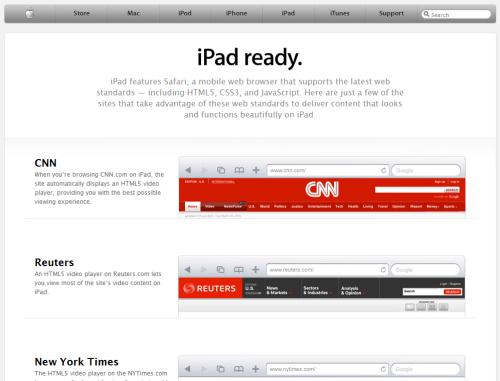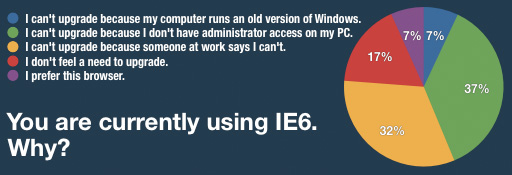
The Apple iPad has polarized the tech industry in the past week. I’m amused by this development, not in the context of product innovation or what it could mean for web design and development, but for the culture of tech opinions.
There’s the half that believes the iPad is not the revolutionary new step in computing people having been waiting for, and then there’s the other half that thinks those critics are not the iPad’s target market. Considering how Steve Jobs began with his keynote about the iPhone is now dominating the mobile phone industry over veterans Nokia and Samsung, it certainly takes a lot to accept that the iPad might not enjoy the same fate. This short and sweet (which is rare) post by Jeff Lamarche puts things in perspective:
I’m sure somebody has told you all this before, but let me point it out again: it’s not always about you. Products can be successful even if they aren’t right for you.
[…] I’m a techie, but I don’t need to be able to program on every electronic device I own. I don’t hate my dishwasher because I can’t get to the command line. I don’t hate my DVD player because it runs a proprietary operating system. Sheesh.
But my beef with this is: hardly ever does that argument surface when not so popular, not so geek-worthy products surface. From what I’ve seen in tech culture, it’s so much easier to reject, even hate a product than even entertain the notion that it could succeed. In general, in a certain demographic, in a certain geographic region.
At times the word easier gets replaced by cooler. It’s cooler to hate stuff; that’s what techies are supposed do.
See how all the Apple or tech pundits are squeezing out the possibilities where the iPad could work wonders. Will it kill e-book readers? Will it revitalize the newspaper industry? Will it shake up processes in education, art, medicine, and business? Which function was it born to do?—as though it hasn’t been discovered only because Steve Jobs didn’t whisper the answer in their ears.
Is it because of passion for the brand? I would think other products may not deserve the same passion, but they do deserve a fair chance. Don’t hate a product just because it isn’t right for you.
Perhaps now there’s half of a crowd deciding people shouldn’t be so quick to judge, the tradition could change. Or it could not, because Apple is the exception to the rule.
Originally posted on February 2, 2010 @ 8:04 pm



